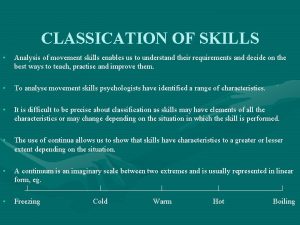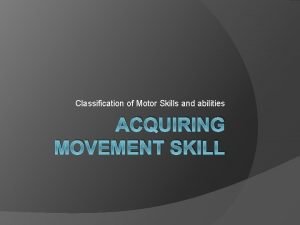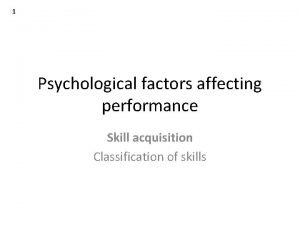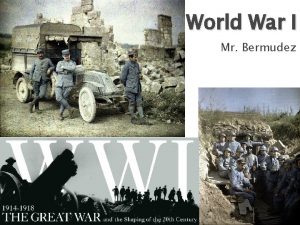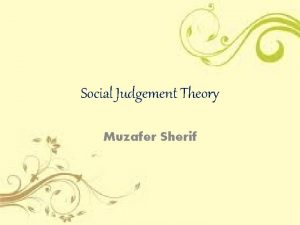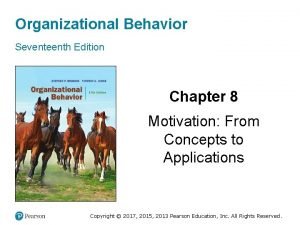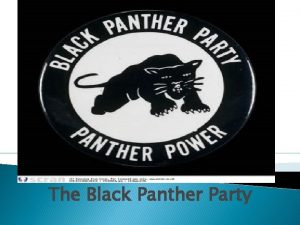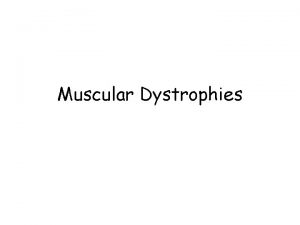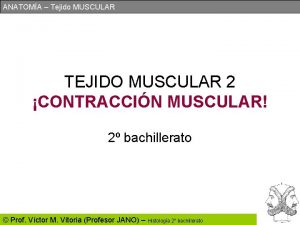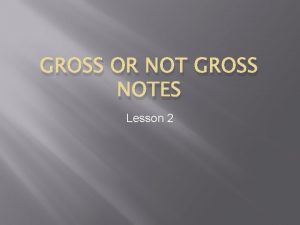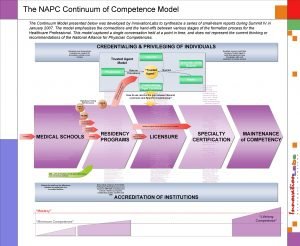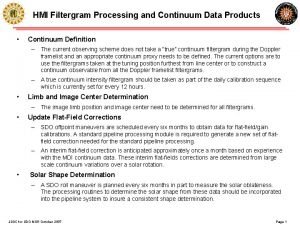Muscular Involvement Continuum Precision of skills GROSS Gross


















- Slides: 18


Muscular Involvement Continuum Precision of skills GROSS • Gross skills are those which involve large muscle movements • Gross movements can be associated with power, strength or endurance • E. g. hammer throwing FINE • Fine skills involve intricate movements using small muscle groups • Fine skills are often associated with the control, accuracy, speed or direction of a skill • E. g. wrist/finger action of a spin bowler in cricket

Environmental Influence Continuum how environmental conditions affect the movement skill OPEN • Open skills are affected by the environment as the situation may be different each time the skill is performed • The skills are perceptual and will need to be interpreted and adapted to in a different way each time • Open skills are externally paced and in an environment that is unpredictable • E. g. receiving a serve in tennis. CLOSED • Closed skills are not affected by the environment • They are performed in the same way each time, are habitual, pre-determined and self paced • E. g. a handstand in gymnastics

Difficulty Continuum how much though or cognitive involvement there is in a skill SIMPLE • Simple skills have little information to process, few decisions to make and a small number of subroutines • E. g. swimming, sprinting COMPLEX • Complex skills need the performer to concentrate because of the high degree of cognitive involvement. • Complex skills have a high perceptual load leading to many decisions which have to be made. The skill will have many sub routines. E. g. a somersault in trampolining, a tennis serve

Continuity Continuum how clearly defined the beginning and end of the movement skill are DISCRETE SERIAL • Discrete skills have a definite beginning and end. In order for the skill to be repeated it must start again • E. g. a penalty in soccer or hockey • Serial skills are where a number of discrete skills are put together to form a whole action • These skills usually have a set order in which they are performed • E. g. triple jump CONTINUOUS • Continuous skills do not have a clear start and finish. The end of one cycle is the beginning of the next • The movement skill usually has to be repeated several times to be meaningful E. g. swimming and running

Pacing Continuum the level of control that the performer has over the timing of the movement SELF-PACED • Internally pace/self paced skills are controlled by the performer, who decides when to begin and what the speed and rate of the action will be • Self paced skills are normally closed skills. E. g. a discus throw EXTERNALLY PACED • The environment controls the pace in externally paced skills and not the performer. The performer commences the skill in response to this outside influence. • Externally paced skills are open skills E. g. receiving a pass in netball, changing direction in sailing

Organisation Continuum how closely linked the sub routines of the movement skill are LOW ORGANISATION • Low organisation skills are made up of sub routines that are easily separated and practised by themselves • E. g. swimming strokes HIGH ORGANISATION • High organisation skills cannot be easily broken up into smaller parts and would generally be taught as a whole skill • E. g. a cartwheel









Name Skill / Example Daniel Gross Toby Fine Ruth Open Jaival Closed Scarlett Teri-Ann Bethany Charlie Simple Complex Discrete Serial Scarlett Continuous Jack Self Paced Alfie Joshua Elliot Externally Paced Low Organisation High Organisation Lennon What is Skill ? Lateya Characteristics of a Skilful movement


TASK – Applying your knowledge Write a short exam style answer to the following question: ‘Explain the long jump skill in terms of the 6 different continuums. ’ (6 marks)
 Muscular involvement continuum
Muscular involvement continuum Muscular involvement continuum
Muscular involvement continuum Open and closed skills examples
Open and closed skills examples Non-precision instruments are
Non-precision instruments are Semi-precision attachment
Semi-precision attachment Single precision vs double precision
Single precision vs double precision Difference between strength and endurance
Difference between strength and endurance Tabel diskon faktor
Tabel diskon faktor Pa career ready skills
Pa career ready skills Allies ww1
Allies ww1 Personal ministry goals
Personal ministry goals Tarnside curve of involvement
Tarnside curve of involvement Sherif kali
Sherif kali How can employee involvement measures motivate employees
How can employee involvement measures motivate employees What is the panther involvement network (pin)?
What is the panther involvement network (pin)? Panther involvement network
Panther involvement network Active involvement definition
Active involvement definition Panther involvement network
Panther involvement network Oral deffinition
Oral deffinition
